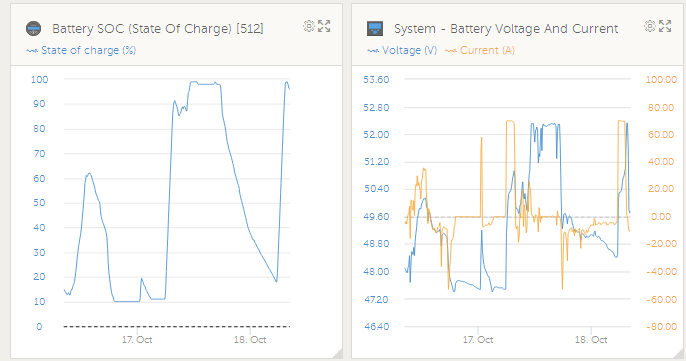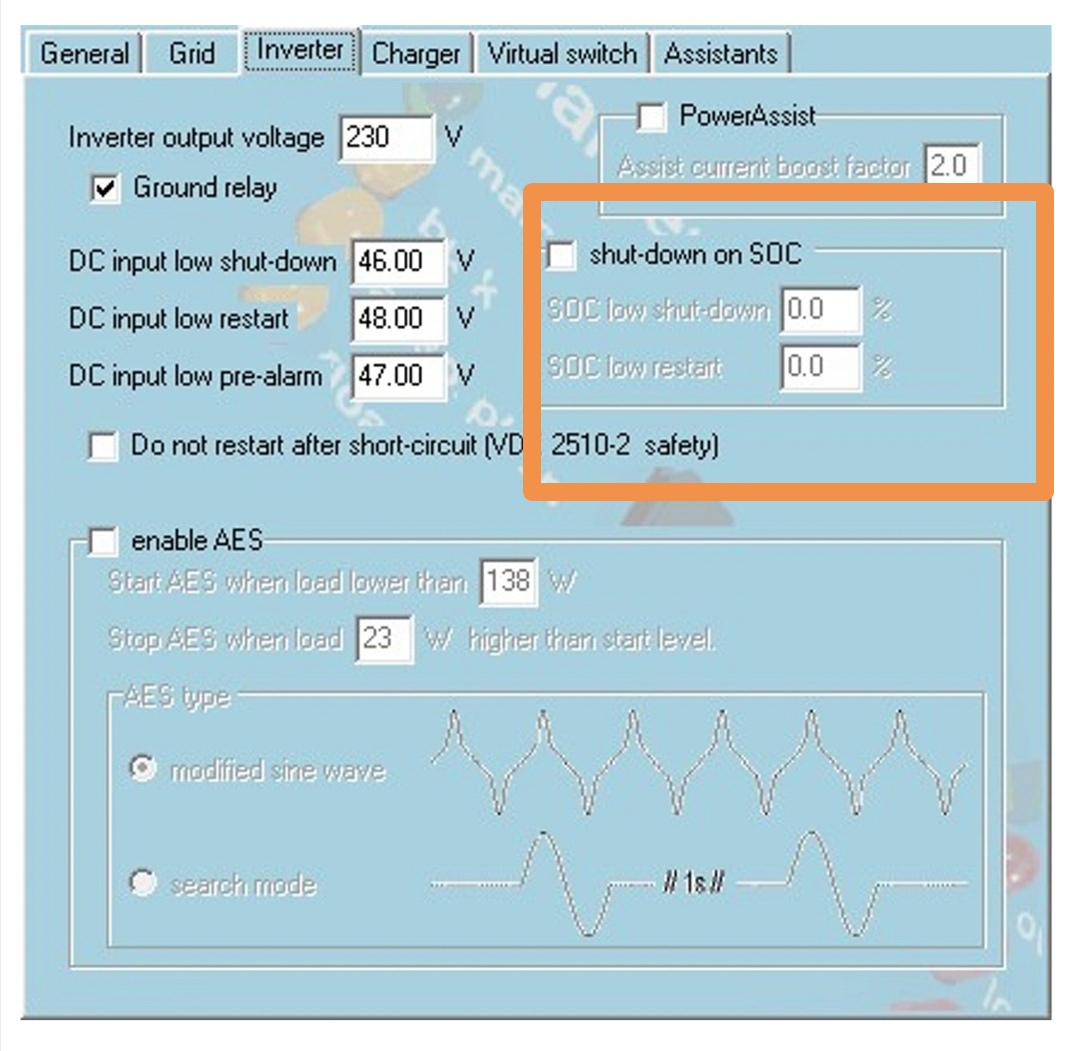I will be installing a new system, but the proper battery install will delay for a bit. Same for the Cerbo installation.
So, the system will get online using a 48V LFP battery with no communication, that has a limit of 100A constant discharge current, charging from solar. Math works out, but I also want to limit battery usage (system will be connected to the grid as well).
Is there a way to limit battery usage in this case? If I went li-ion, I would have been able to set low voltage limit on the Multiplus and it would stop inverting at that point; however, the LFPs have a very flat voltage curve, and I don’t think this trick will work, as it does on another installation of mine.
In other words, I want full inverter power when solar is available, but when there is not enough solar, I’m trying to find a way to limit battery discharge percentage. No GX communication at the moment.
Any ideas?


